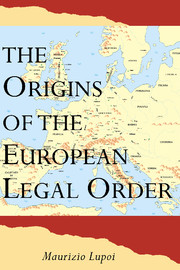Book contents
- Frontmatter
- Contents
- List of abbreviations
- 1 The early Middle Ages: a comparative approach
- 2 A historical and institutional profile of the Roman empire in the fourth and fifth centuries
- 3 Excursus I: ‘Barbarians’
- 4 Historical and institutional profiles of the ‘new dominations’
- 5 Excursus II : The days of the week
- 6 Excursus III: Anglo-Saxon charters
- 7 Consensus by assembly
- 8 Excursus IV: Authority and consensus in judicial decisions
- 9 Public allegiance
- 10 Excursus V: The Anglo-Saxon writ
- 11 Private allegiance
- 12 Open legal systems
- 13 Excursus VI: Textual ‘coincidences’ in documentary forms
- Chronology of popes and sovereigns
- Appendix of sources
- Bibliography
- Index
11 - Private allegiance
Published online by Cambridge University Press: 04 February 2010
- Frontmatter
- Contents
- List of abbreviations
- 1 The early Middle Ages: a comparative approach
- 2 A historical and institutional profile of the Roman empire in the fourth and fifth centuries
- 3 Excursus I: ‘Barbarians’
- 4 Historical and institutional profiles of the ‘new dominations’
- 5 Excursus II : The days of the week
- 6 Excursus III: Anglo-Saxon charters
- 7 Consensus by assembly
- 8 Excursus IV: Authority and consensus in judicial decisions
- 9 Public allegiance
- 10 Excursus V: The Anglo-Saxon writ
- 11 Private allegiance
- 12 Open legal systems
- 13 Excursus VI: Textual ‘coincidences’ in documentary forms
- Chronology of popes and sovereigns
- Appendix of sources
- Bibliography
- Index
Summary
Patronage, commendation, self-donation
Throughout the early Middle Ages people were linked by a multiplicity of bilateral and unequal bonds of allegiance with diverse origins, purposes and content.
In the first half of the fifth century. Salvianus complained that the sons of small property-owners no longer had anything to inherit because their fathers had become the coloni of the rich in order to gain their protection. He bears witness to the rise of the late-imperial latifundium, and to a political and social situation marked by oppressive taxation that bore most heavily on small landowners and artisans.
In 758 a wretched man named Gauzoino gave everything he had, including himself, in exchange for food and lodging in one of the hovels surrounding a monastery and declared that the abbot ‘avead podistate’. He testifies to a situation of abject poverty – poverty so pervasive that self-donation became frequent enough to inspire a notarial formulary – and to the proliferation of the pauperes and the rise of an aristocracy which drew its strength from the ownership of land rather than from armed might.
Later still, a small landowner donated all his possessions to a monastery, perhaps with a view to holding them in usufruct for the rest of his life – a type of relationship also attested in notarial formularies, and so widespread that it prompted a capitulary modifying the Salic law.
- Type
- Chapter
- Information
- The Origins of the European Legal Order , pp. 321 - 367Publisher: Cambridge University PressPrint publication year: 2000

